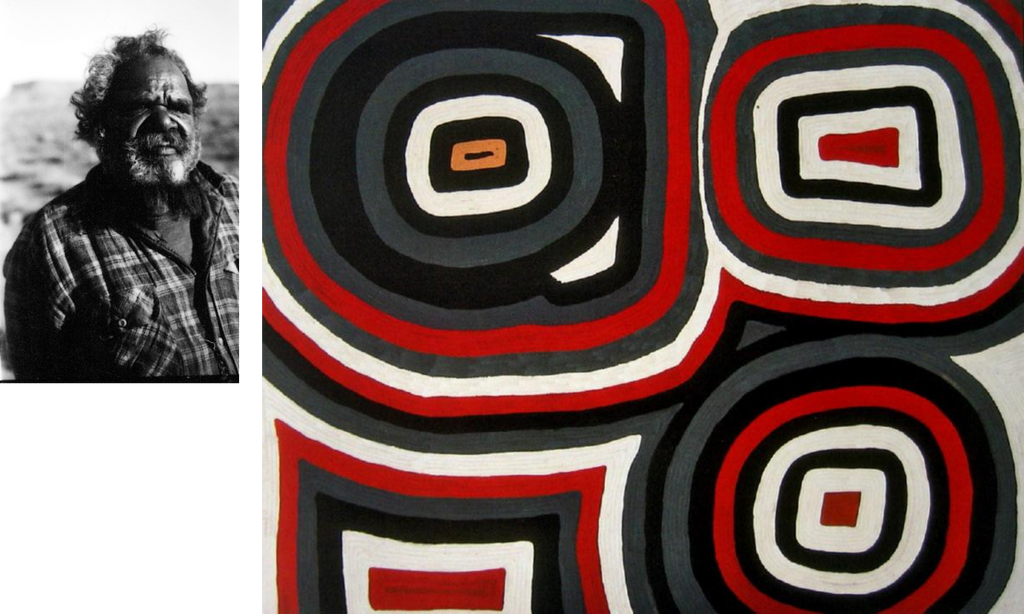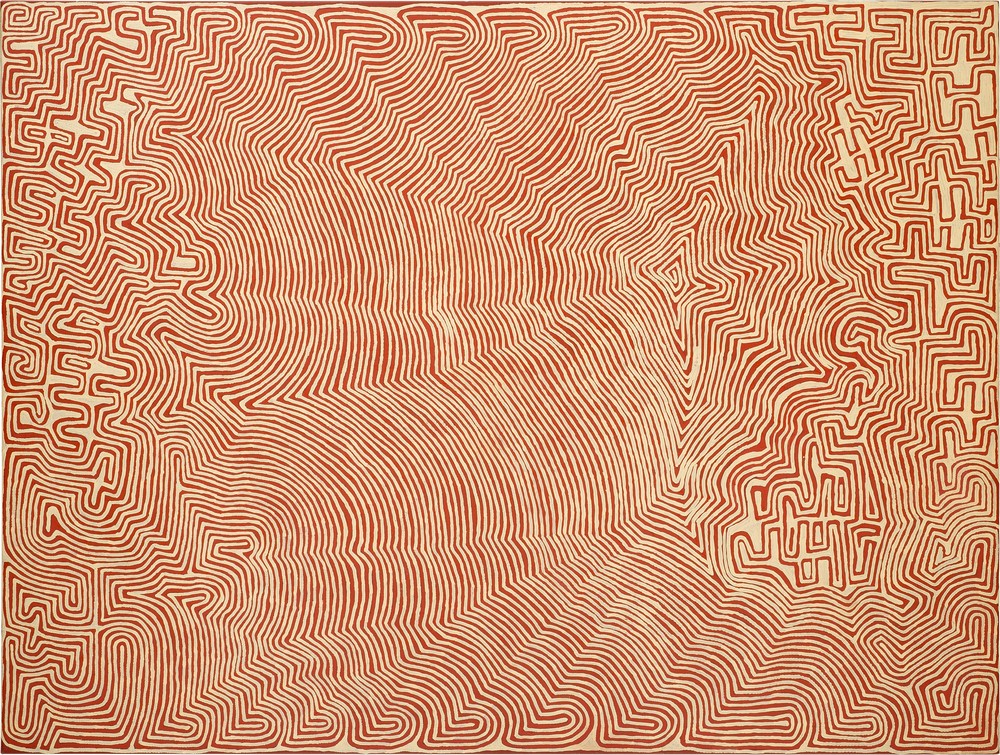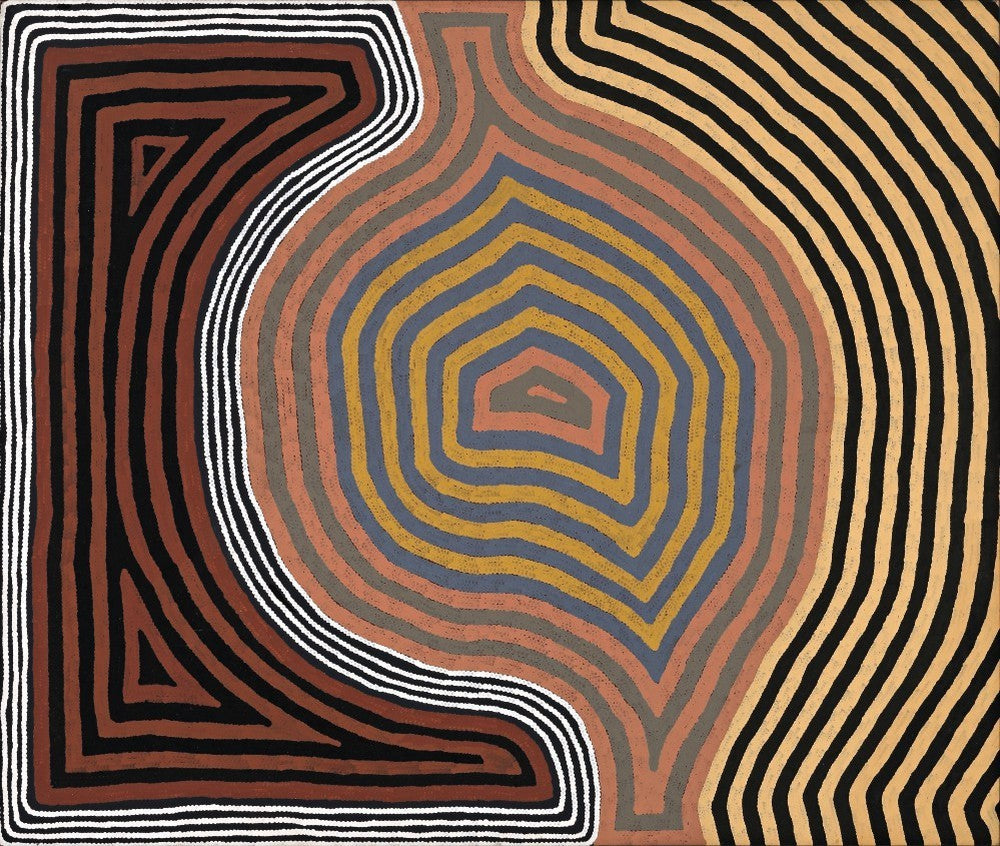Ronnie Tjampitjinpa, a celebrated artist whose life and work have left an indelible mark on the world of Aboriginal art

L Ronnie Tjanpitjinpa R Two Boys at Wilkinkarra (Lake Mackay) 1992, Ronnie Tjanpitjinpa
Tjampitjinpa was born around around 1943 in the remote desert near Muyinnga, in the Northern Territory. His early years were spent immersed in the traditional lifestyle of the Pintupi people, where he was steeped in the cultural practices and lore that would later inform his artistic practice.
Tjampitjinpa's initiation into the world of art began in the early 1970s at Papunya, where he joined a group of Pintupi men who were pioneering a new form of Indigenous expression. These artists were translating their ancestral stories and the sacred symbols of their culture onto canvas, giving birth to the Western Desert art movement. Tjampijinpa quickly emerged as one of the leading figures in this movement, renowned for his bold, geometric designs and his innovative use of colour.
His work is characterised by its striking simplicity and the profound sense of connection to the land and its ancestral stories. He is also known for his mesmerising compositions that represent the journey of the Tingari ancestors across the desert landscape. Tjampitjinpa's work, is a testament to his ability to convey complex narratives through abstract forms.

Ngarru, 2008, Ronnie Tjampitjinpa
Throughout his career, Tjampitjinpa's art has been celebrated for its unique blend of traditional and contemporary elements. His paintings are not only visually stunning but also deeply rooted in the cultural heritage of the Pintupi people. They serve as a bridge between the past and the present, allowing viewers to engage with the rich spiritual and cultural traditions of Indigenous Australia.
Ronnie Tjampitjinpa's success in the art market is underscored by the remarkable sale of his painting "Tingari Ceremonies at the Site of Pintjun," which fetched $370,000 in 2019, setting a record for his work. However, his prominence has also made him one of the most heavily exploited artists, with a significant number of works available on the market being products of carpetbagging. This practice, where artists are taken advantage of by unscrupulous dealers, has been a persistent issue in the Aboriginal art market. It is crucial for collectors and enthusiasts to ensure that the provenance of Tjampijinpa's works is legitimate, with the primary and secondary markets being authenticated by Papunya Tula Artists, the art cooperative that represents him and other Pintupi artists. This ensures that the integrity of his art is preserved and that the rightful recognition and remuneration are accorded to the artist and his community.

Tingari Ceremonies at the Site of Pintjun,Ronnie Tjampitjinpa, Sold at Sothebys New York, 2019, $370,000AUD
Tjampitjinpa's contributions to Aboriginal art have been recognised with numerous awards and accolades, and his work has been exhibited in galleries and museums around the world. He has played a crucial role in bringing the art of the Western Desert to international attention and has inspired countless artists to explore new avenues of expression within the framework of their Indigenous heritage.
In reflecting on the life and work of Ronnie Tjampitjinpa, it is clear that he was not only an extraordinary artist but also a cultural ambassador for his people. His paintings are a testament to the enduring strength and resilience of the Pintupi culture, and his legacy will continue to influence the world of Aboriginal art for generations to come. Through his art, Tjampitjinpa has ensured that the stories and traditions of the Pintupi will be remembered and celebrated, not only in Australia but across the globe.







